
The following is the "Foreword" from The Buddha Image: Out of Uddiyana show catalogue courtesy of Tibet House US. It was written by Robert Thurman, president of Tibet House, and it is followed by an interview with collector Nik Douglas whose exhibition has been extended beyond its original October run to November 16th.
FORWARD
In Mahayana Buddhist teaching, it is proposed that a perfectly enlightened buddha has three bodies: a truth body (dharmakaya), a beatific body (sambhogakaya), and an emanation body (nirmanakaya). The first of these is the absolute oneness of all buddhas, non-buddhas, and things, experienced as the truth of reality by a buddha. The second is a subtle body of bliss, nondual from the absolute body but personally enjoyed by each buddha being and only perceived by other beings very close to that attainment. The third is the myriad embodiments buddhas manifest in order to communicate with alienated beings: It has three types, ideal (parama - Shakyamuni Buddha et al.), incarnational (janma - all sorts of beings who introduce others to freedom and happiness), and artistic (silpa - all sorts of artistic representations of buddhas' bodies, speech, and mind). The objects in this milestone exhibition are traces of the artistic emanation body, manifesting the great variety and creativity of many peoples throughout the hard history of Asia who were inspired by some sort of encounter with higher beings who walked among them.
It is with a great sense of pride and delight that we present the "Out of Uddiyana" exhibit for the first time in the Tibet House gallery. We in this way wish to honor Nik Douglas' life's work of dedication to the Dharma, interdisciplinary scholarship and research, avid connoisseurship and arduous efforts to collect an extraordinary body of work documenting this central vein of the artistic emanation body. Our highest hope in doing so is to inspire a modern day emperor Ashoka to take the entire collection and manifest it in various venues throughout the world, ultimately, ideally, resting in a national museum in a culturally liberated Free Tibet. As Von Schroeder has so skillfully documented, Tibet's dedicated lama scholars had already been collecting an extraordinary range of Buddha images from other lands, and the amazing manifestations in this exhibit would complement them wonderfully. Imperishable Tibet, of course, has been broken open as the last bastion of the living tradition of human education for freedom that came "Out of Uddiyana," and nevertheless will be the seminal font whence the undying tradition will burst forth yet again to give life around the world of suffering beings, as promised long ago and still today by the compassionate Shakyamuni as the Kalachakra Buddha (planetary Time Machine for the positive evolution of all beings).
Even if this imperiled planet is not fortunate enough to see this happen and the Buckingham Collection does not find a permanent home where it most surely definitely belongs, we hope that the manifestations gathered in the exhibition will find their way here and there to continue to inspire individuals to use their precious human lives in the evolutionarily most meaningful way to create real human values in themselves and others.
We are thankful to Nik Douglas and his family for choosing our humble venue in which to exhibit the treasures he has been collecting for many decades.
Robert A. F. "Tenzin" Thurman
President, Tibet House US
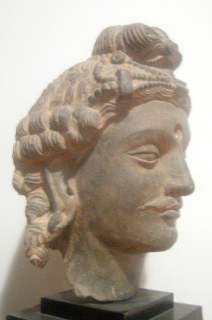
A Conversation with Collector Nik Douglas
Mike Ragogna: You have an exhibition coming up called The Buddha Image: Out Of Uddiyana. Where did the artifacts come from that will be featured in this exhibit?
Nik Douglas: They come from an area that mostly would have been called Uddiyana in the old days--in the days when Alexander The Great went through Afghanistan and Pakistan with his army, so we're talking about 300 BC. A lot of his Greeks remained there, and that area today is called Swat in Northern Pakistan. Primarily, the area extends into Afghanistan in one direction, into India in the other direction, and it's a verdant, sort of paradisaical land where the Buddha's image probably first evolved. Swat, of course, these days, has been in the news, especially because of the Taliban and because of the floods, and I think a couple of years ago, the earthquakes. So, they've had some really hard times. Most of the monasteries that were there are now in ruins, and most of the artifacts have been dispersed all over the world. Most of what I collected came through the family of the Wali of Swat, which was a family that ruled in Swat at one time. Eventually, they were, basically, removed by the authorities, and the family moved to London. So, I started acquiring these things in the early to mid-sixties. I was doing a little self-discovery, and I just began to collect the artifacts to understand where the Buddha imagery evolved out of, which it turns out, was out of Uddiyana. I was also interested in how it evolved, and the impact of the imagery on the neighboring areas, like along the Silk Road, ultimately, into China, leading the spread of Buddhism out of Uddiyana into different countries as far away as Japan, China, and Korea.
MR: That's amazing. Most people don't know the history of how artifacts emerged from that region.
ND: It's a little obscure, I know.
MR: And this is your private collection?
ND: Yes, it's a collection assembled by me over a forty-four year period. It's been in boxes, storage spaces, and so forth all those years. It is the largest collection anywhere, and it's large, especially in the precious areas, meaning we have a lot of very precious imagery--bronzes which have never been seen before, and what is probably the largest collection of early bronze Buddha imagery. It's probably more than all the museums in the world combined. It's a very, very large collection, indeed. There is also very exquisite imagery in gold and crystal, as well as the more normally seen Gandhara style stone and stucco sculptures of the Buddha, portraits of the Buddha, and so forth.
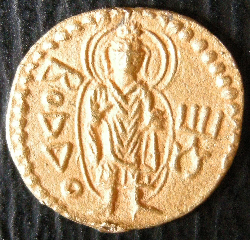
MR: What is a normal day for you when you're working on this collection?
ND: For me, my normal day has changed. Obviously, I'm in New York now, curating this exhibition. In the old days, first of all, I lived in India for ten years. By India, I mean the greater Indian area, which includes the mountains of Pakistan, Afghanistan, and the area where Buddha's life story was basically evolving. I visited all those places, all the various pilgrimage places associated with Buddha's life story, and along the way, I familiarized myself with what was available there in the art, and here and there, I was able to acquire things.
MR: What is your relationship to the Buckingham collections?
ND: The Buckingham collections are from a family name, and we are a family of collectors--we have been for about three-hundred years in my family. Originally, once upon a time, they were the Dukes of Buckingham, and our family home was what is now Buckingham Palace, but that's a long story of all that was lost a long time back. All that remained in our family was the collecting impulse, I suppose. My mother and my grandfather were great collectors, and I guess I kind of picked up on that and continued with it.
MR: How young were you when you became conscious of your own collector nature?
ND: Very young. When I was four years old, my father bought a house in Cypress, then later sold the house with everything in it. But actually, he gave me, at the age of four, all of the Egyptian artifacts, so they were my toys and they were the things that I was brought up with. I wanted, at one point, to be an Egyptologist, but I ended up going to India, eventually, after a stint in the rock 'n' roll business in England.
MR: What did you do in rock 'n' roll?
ND: I was involved early on with the development and production of rhythm and blues, with groups that eventually turned into Cream, for example, and The Moody Blues. The original group I worked with was a group called The Graham Bond Organization, and I also was involved with pirate radio--Radio Caroline--in the early days in England, when BBC wouldn't play pop music, but that's a long story. I left all that, eventually, to go to India, and I stayed there about ten years.
MR: Now, having spent all that time in India, did you acquire artifacts from other traditions such as Hinduism?
ND: The Buckingham Collections include Hindu material, but this exhibition is very, very focused on the Buddha imagery, so it is strictly Buddhist material. I say, without exaggeration, it's the greatest collection of its type anywhere, and I am honored to be able to show it at Tibet House, which is a great venue. It's not really a stuffy, museum-type exhibition space--it's more a living space. You can walk around the exhibits, we have a lot of information about the pieces, and I think that people who come will be surprised at how nice it is.
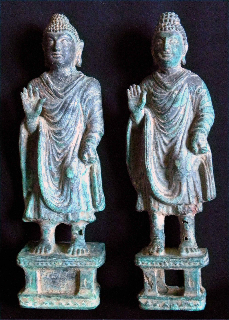
MR: Can you tell us about Tibet House?
ND: Tibet House is sort of run by Bob Thurman, who is the president here. He has always been, for a long time, close with the Dalai Lama, he's been a friend of mine for forty years, and of course, he's the father of Uma Thurman, the actress. The Thurman family sort of reigns here, in fact--Bob's son Ganden runs the day-to-day activities.
MR: Do you remember when the two giant statues, I think they were statues of Buddha...
ND: ...when they were blown up by the Taliban?
MR: Yes. There has been a campaign to eliminate Buddhism in that region, hasn't there been?
ND: Absolutely. I mean, Islam in general--I don't want to generalize too much--has been against what they consider idolatry. Obviously, it's not idolatry any more than images of Jesus Christ are idolatry. I always like to make the comparison that if you had a great teacher or somebody who impressed you, you would want to have a photograph of them. Well, likewise, I think the Buddha was a great teacher, I'm sure he was, and I'm sure his followers wanted to have an image of him so they could be reminded of him. So, what we have are representations of, basically, the philosopher teach, which is actually a Greek idea. The Greeks did this--made statues of their philosopher teachers--and reminded themselves of their presence. So, what happened in Afghanistan is really a travesty, as these cultural icons were blown-up by ignorant people.
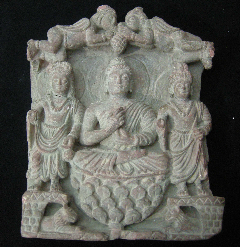
MR: Can you point out some of the highlights of this exhibit for some of the people who will be navigating it?
ND: Sure. By they way, a lot of it is also online. You can see it at www.buckinghamcollections.com, and you can also link to it through Tibet House U.S. I would start with seventeen of the best Indo-Greek sculptures, which begin with the faces of the Buddha, events in the life of the Buddha, the miracles of the Buddha, and various important events beautifully portrayed in sculpture. Then, there is a series of reliquary stupas, which are basically small commemorative structures made of crystal, gold, and bronze. They are really, truly unique and marvelous works of art in themselves. There is wonderful gold granulation work, which is very, very fine, jewelry-type workmanship. Then, a series of very important bronze Buddhas--the largest gathering of bronze Buddhas from between the second and fifth centuries AD. That type of Buddha, which is a specific kind of Buddha that we call the Uddiyana Buddha, has a certain type of drapery to the robe, and was considered to be the original icon of the Buddha. It was transmitted out of Uddiyana, along the Silk route, eventually reaching as far away as Korea and Japan; but this is the way the image was transmitted--through this single type of icon, from this small area of Uddiyana/Swat, in Pakistan. Obviously, these days in Pakistan, you don't have any appreciation or understanding, really, of the importance. So, luckily, these things have survived outside of that domain.
MR: Nik, is there any advice that you might have for up-and-coming archivists or collectors?
ND: Yeah, definitely. It's an obsessive type of behavior that you need to cultivate. Never give up on the things that you are looking for because you definitely get wonderful feedback when you do find out about what they mean and you get to see other examples. It's a life enriching type of experience. I want to add one more thing about the exhibition. There is a part two to the exhibition, which is the tantric element, which is also out of Uddiyana. The so-called second Buddha, the person that established tantric Buddhism in Tibet, a man called Padmassambhava also came out of this same Uddiyana place. The part two of the exhibition at the Tibet House is a series of twelve very large tantric sculptures in bronze, and twenty-four smaller ones, all collected by the tantric order in America, which you could almost say was a cult, though I don't generally like the word. It was a group or movement that started in the early 1900s, and was actually responsible for introducing yoga to America. So, these are the artifacts from that group. The founder of that group died in '55, so we're talking about a time that was pre-beatniks and pre-psychedelic '60s. So, we have gathered together all the best of that material in part two of the show.
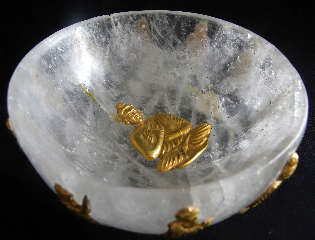
PRESS RELEASE:
TIBET HOUSE US PRESENTS...THE BUDDHA IMAGE: OUT OF UDDIYANA
Exhibition has been extended through November 16, 2010
"A lifetime collection of awesome majesty by one of the great adventurers, scholars and connoisseurs of Buddhist art, following the origins of the Buddha image from Uddiyana up to modern times. It is with a great sense of pride and delight that we present the "Out of Uddiyana" exhibit for the first time at Tibet House." - Bob Thurman, Jey Tsong Kappa Professor of Indo-Tibetan Studies Columbia University and President of Tibet House
A one-of-a-kind collection featuring precious materials and rare artifacts, including 12 large Tantric sculptures available for public viewing for the first time at Tibet House US
"A lifetime collection of awesome majesty by one of the great adventurers, scholars and connoisseurs of Buddhist art, following the origins of the Buddha image from Uddiyana up to modern times. It is with a great sense of pride and delight that we present the "Out of Uddiyana" exhibit for the first time at Tibet House." - Bob Thurman, Jey Tsong Kappa Professor of Indo-Tibetan Studies Columbia University and President of Tibet House
The Tibet House U.S.
22 West 15th Street
New York, NY
